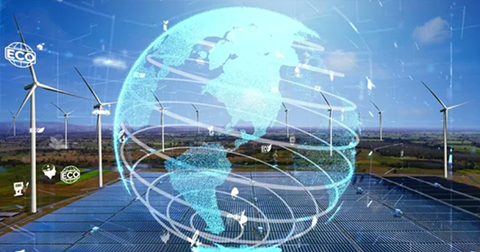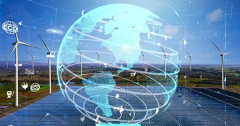The Digital and Energy Twin Transition in Italy: A Challenge for the Future
In recent years, the concept of the Twin Transition – the combined digital and energy transition – has become central to sustainable development strategies. Italy, in line with European directives, is working to integrate these two pathways to promote a more efficient, resilient, and environmentally friendly economic model.
The topic of the digital and energy Twin Transition will be the main focus of the 2025 edition of SMART BUILDING EXPO.
What is the Twin Transition and why is it important?
The Twin Transition merges digital transformation with decarbonization, leveraging emerging technologies to improve energy efficiency and reduce CO₂ emissions. This approach makes it possible to optimize industrial processes, enhance resource management, and develop innovative solutions for renewable energy.
Digitalization provides advanced tools – such as Artificial Intelligence, cloud computing, and the Internet of Things (IoT) – to monitor and optimize energy usage. At the same time, the energy transition promotes reducing dependence on fossil fuels through the adoption of renewable sources and more sustainable systems.
The Italian Context: Opportunities and Challenges
Italy has made the Twin Transition one of the strategic priorities of its National Recovery and Resilience Plan (PNRR), allocating significant resources to digitalize businesses and make the production system more sustainable. Key areas of intervention include:
-
Industry 4.0 and digitalization of production processes: Italian companies are investing in automation, big data, and machine learning to cut energy consumption and boost productivity.
-
Smart grids and intelligent energy networks: The integration of digital systems enables real-time balancing of energy demand and supply, increasing the efficiency of electrical grids.
-
Energy efficiency in buildings and cities: The smart city concept involves the use of sensors and digital platforms to optimize public lighting, energy consumption, and waste management.
-
Sustainable mobility and electric transportation: Italy is promoting the adoption of electric vehicles and charging infrastructure to reduce urban pollution.
However, Italy’s Twin Transition faces several challenges: the need for more advanced digital infrastructure, improved digital skills training, and the simplification of bureaucratic procedures that often slow down innovation.
The Benefits of the Twin Transition for Businesses and Citizens
The integration of digital and energy solutions brings tangible advantages:
-
Greater competitiveness for businesses: through more efficient processes and lower costs.
-
Lower environmental impact: with reduced emissions and smarter use of resources.
-
New job opportunities: driven by the growth of innovation and sustainability-related sectors.
Italy has the potential to become a European model in the Twin Transition, but achieving this will require consistent commitment from institutions, businesses, and citizens to fully seize the opportunities of this revolution.




